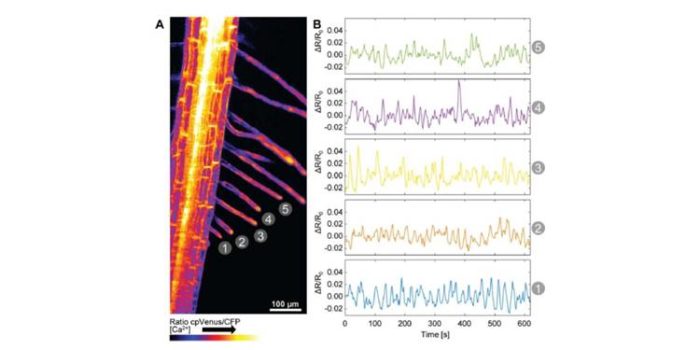
Light sheet fluorescence microscopy quantifies calcium oscillations in root hairs
Plant Science Research Weekly, Research0 Comments
/
Light sheet fluorescence microscopy (LSFM) is a powerful imaging tool; unlike confocal microscopy, which illuminates a sample one small volume at a time, LSFM illuminates a complete optical section at a time, greatly speeding up the imaging process and lowering phototoxic effects. Candeo et al. use close-to-physiological…
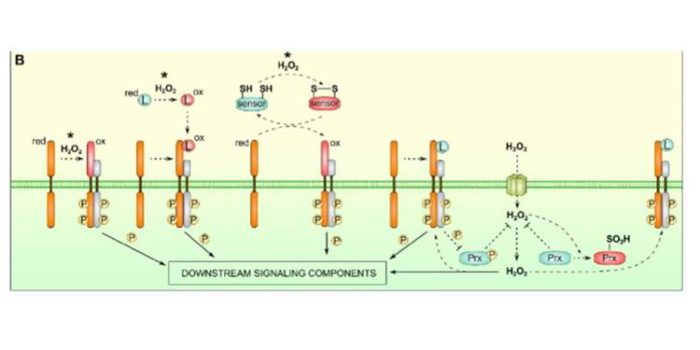
Review: Bound by fate: Reactive oxygen species in receptor-like kinase signaling
Plant Science Research Weekly, ResearchBoth receptor-like protein kinase (RLK) and reactive oxygen species (ROS) signaling have been shown to affect a plethora of plant processes, including growth, metabolism, development, and environmental responses. To date, previous reviews have focused on mechanisms that govern either ROS or RLK signaling;…
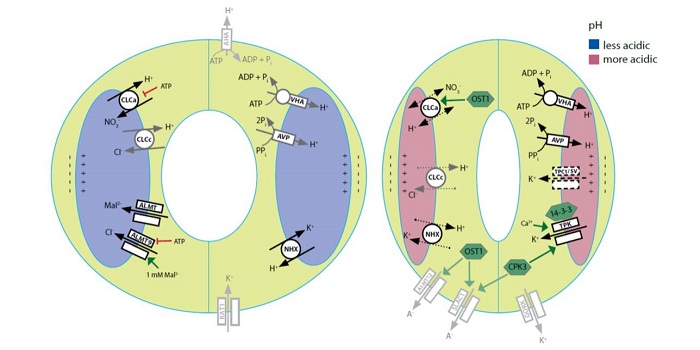
Update: Ion transport at the vacuole during stomatal movement
Plant Physiology, Plant Physiology: Updates, Plant Science Research Weekly, ResearchGas exchange and transpiration are regulated by the stomatal aperture, which is itself regulated by the changes in volume of the guard cells that overlay the stomatal pore. When triggered to open, solutes such as K+ and Cl– enter the guard cell through ion transporters, followed osmotically by water;…
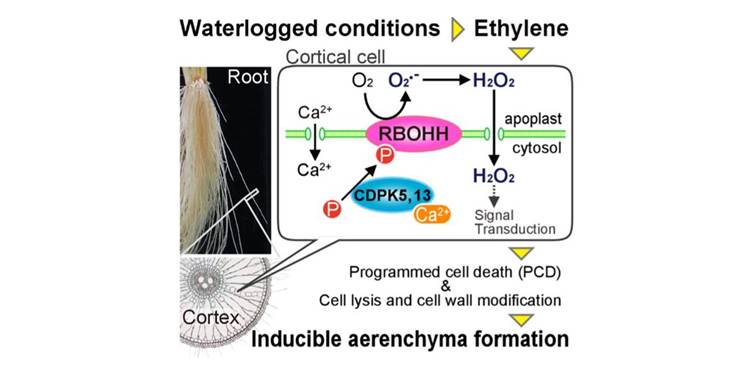
Better understanding how plant roots breathe under water ($)
Plant Science Research Weekly, ResearchWaterlogging, a process by which water saturates soil, results in oxygen-deficient soil conditions and can result in massive crop loss. In order for plants to survive in waterlogged soil, shoots transport oxygen to roots through lysigenous aerenchyma, a specialized tissue type formed by ethylene-induced…
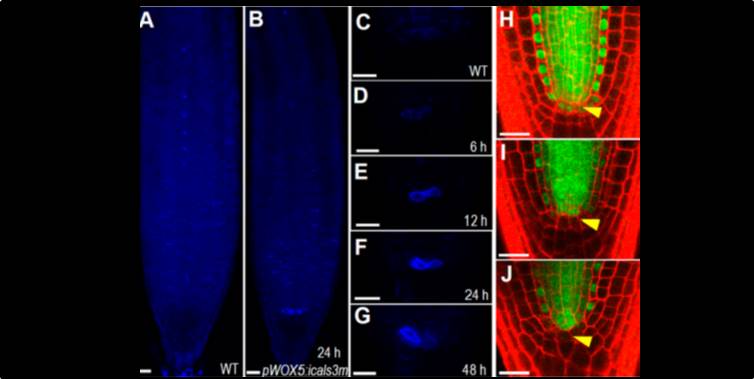
Symplastic communication spatially directs local auxin biosynthesis to maintain root stem cell niche in Arabidopsis ($)
Plant Science Research Weekly, ResearchAlthough plant cells are surrounded by walls, cytoplasmic strands connect adjacent cells through junctions called plasmodesmata. Liu et al. investigated the contributions of plasmodesmata to signaling between root quiescent center (QC) cells and the cells that surround the QC by expression of an inducible…
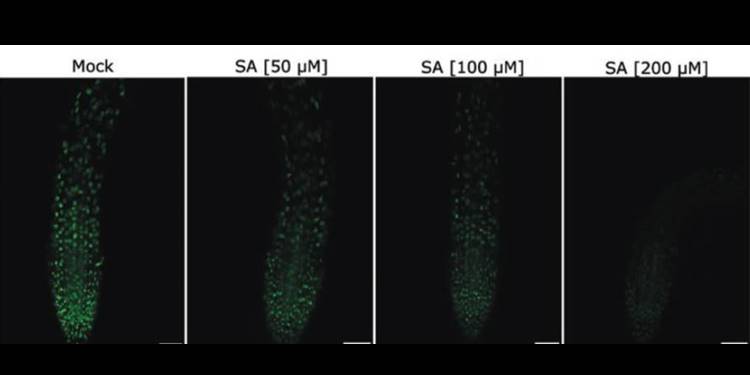
Salicylic acid interferes with GFP fluorescence in vivo
Plant Science Research Weekly, ResearchGreen Fluorescent Protein (GFP) is a widely-used reporter with which to analyze protein localization and expression levels. De Jonge et al. report that GFP fluorescence is greatly diminished in the presence of the hormone salicylic acid (SA), as is the fluorescence of the reporters RFP and VENUS. The…
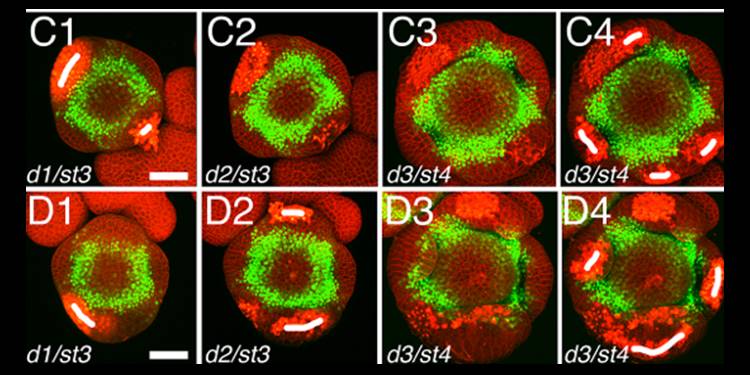
Live Confocal Imaging of Developing Arabidopsis Flowers
Plant Science Research Weekly, ResearchMonitoring cells and their activities in real time provides exceptional insights into their mechanisms and strategies of growth. Prunet has used live confocal imaging of Arabidopsis flowers to study the placement of floral organs and the dynamics of floral stem cells. Here, he presents a detailed protocol…
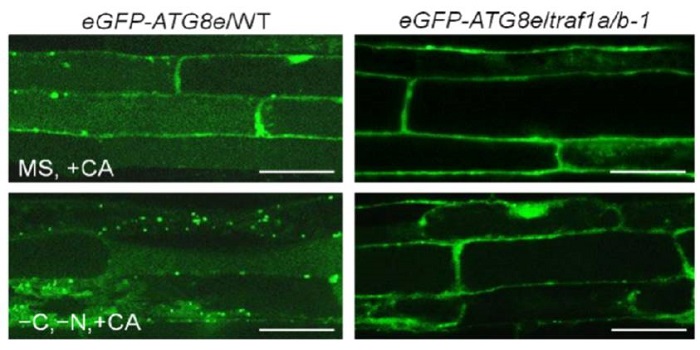
Family Chores: TRAF-Family Proteins Help Recycle Cellular Rubbish by Regulating Autophagy Dynamics
Research, The Plant Cell: In BriefIN BRIEF by Jennifer Lockhart jlockhart@aspb.org
Plant cell components that are no longer needed are degraded in the vacuole, but they don’t get there by magic. Sack-like double-membrane structures called autophagosomes engulf this cellular rubbish and neatly transport it to the vacuole for degradation.…
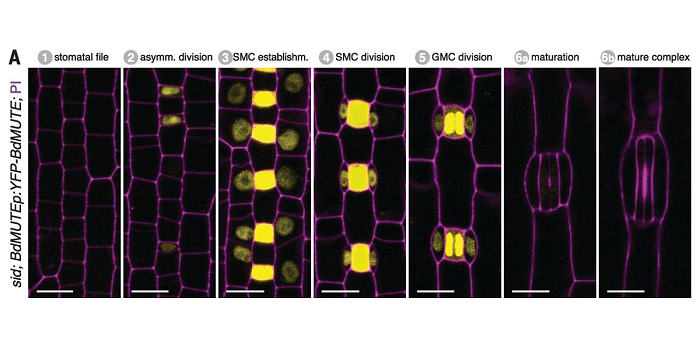
Mobile MUTE specifies subsidiary cells to build physiologically improved grass stomata ($)
Plant Science Research Weekly, ResearchPlants breathe through pores called stomata on leaf surfaces. Stomata are the point of contact with the outside world as they allow gas exchange (e.g., CO2 for photosynthesis) and transpiration. Grasses have evolved to form more efficient stomata in which the guard cells are flanked by additional subsidiary…

